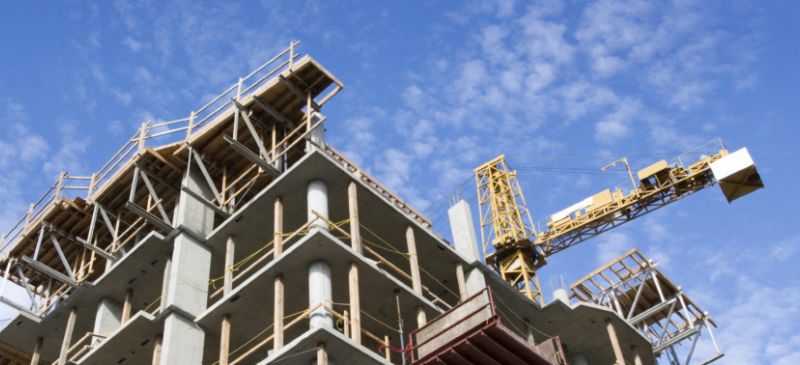- Home
- About us
- News
- Events
- EXPORT Export
-
BUY
Buy
BuyBuyFood and beverage Beef Caviar Dairy Products Fruits Healthy foods Olive oil Processed Foods Rice Sweets, honey and jams Wines ICT Software development Technology products
- INVEST Invest
- COUNTRY BRAND Country Brand
-
INFORMATION CENTER
Information center
InformationCenterInformationCenterReports Country reports Department reports Foreign trade reports Product-Destination worksheet Sectors reports Work documentsStatistical information Classification Uruguay XXI Exports Imports Innovative National Effort Macroeconomic Monitor Tools Buyers Exporters Investors
- Contact
-
Languages
Uruguay consolidates its position as a regional hub for architecture and engineering services
The country promotes talent, innovation, and sustainability as pillars of its export offering in the AEC sector
Share:

Uruguay is strengthening its position as a reliable platform for the export of architecture, engineering, and construction (AEC) services. It stands out for its highly qualified talent, solid technological infrastructure, tax benefits, and sustained commitment to sustainability.
According to the Architecture, Engineering, and Construction Sector Report (2024) prepared by PwC, thirty-nine percent of companies in the sector have exported services in the last two years.
This growth was accompanied by the intensive incorporation of technology, especially methodologies such as Building Information Modeling (BIM), in whose development Uruguay has become a regional benchmark. The National BIM Committee has driven this transformation—made up of public agencies and industry leaders—and by the BIM Forum Uruguay, which promotes common standards and fosters collaborative work throughout the value chain.
Two new sectoral business cases prepared by Uruguay XXI highlight that 100% of exporting firms work in English and that more than 21,000 people have tertiary education related to the sector, including 6,609 architects and 5,700 engineers. In addition, 82% of university professionals speak English and 43% speak Portuguese, which facilitates links with international markets.
Cutting edge and tradition in balance
Uruguay combines a solid academic and professional tradition, more than a hundred years of institutional history, and a constant commitment to innovation. The legacy of architects such as Julio Vilamajó, Rafael Viñoly, Eladio Dieste, and Román Fresnedo Siri, whose works transcend borders, has been continued by new generations committed to sustainable design and energy efficiency.
Current examples such as The Edge project—developed by the Uruguayan studio Ponce de León Arquitectos together with the London firm Foster + Partners—and Médano El Pinar, the last project designed by the late architect Rafael Viñoly, consolidate this commitment to excellence. Internationalization has also reached milestones such as the participation of Enginlabs in the world’s largest submerged tunnel between Germany and Denmark, and Ingenium in the HS2 high-speed train in the United Kingdom.
A strategic industry with regional projection
Construction is one of Uruguay’s economic pillars, accounting for 8% of GDP and employing more than 120,000 people nationwide, including construction workers, specialized technicians, and professional and administrative staff. This weight translates into an annual investment of over USD 3.7 billion, 60% of the total invested in the national economy. Through a solid public-private partnership led by the Uruguayan Chamber of Construction (CCU), the sector has strengthened its institutional framework, promoted technology adoption, and consolidated a business culture focused on efficiency and innovation.
Green construction: more than a trend
The country’s commitment to sustainability is reflected in the proliferation of projects with environmental certifications such as LEED, EDGE, and the national Certificación Más. Buildings such as Alma Et, Celebra, and Carrasco Valley stand out for incorporating international energy efficiency standards and responsible design. Uruguay also has its own Sustainable Building Council (UYGBC), which promotes emissions reduction and efficient resource use.
Beyond the widespread use of international standards such as LEED and EDGE, Uruguay has incorporated new construction trends such as timber building, supported by a national roadmap and the installation of South America’s first CLT (cross-laminated timber) plant. Projects such as the Museum of American Contemporary Art (MACA), designed by renowned Uruguayan architect Carlos Ott, and the Arboleda corporate building, designed by the firm Dovat Arquitectos, reflect this transition toward solutions with a lower environmental impact, aligned with criteria of energy efficiency, indoor comfort, and the circular economy. This evolution reinforces the country’s position as a regional benchmark in sustainable construction.
Uruguay also offers a favorable environment: political, legal, and social stability, respect for the rule of law, regional democratic leadership, and a low perception of corruption. The country has been rated investment grade for 13 years. It is positioned as a net exporter of global services, including architecture and engineering, with tax incentives, free movement of capital, and competitive free trade zones.
The business case concludes that Uruguay offers a robust value proposition for companies looking to expand their operations in Latin America. It combines talent, technological infrastructure, and reliable macroeconomic conditions.
Access the Architecture and Engineering Sector Business Case here
FEATURED NEWS:
- Uruguay strengthens its international positioning in architecture, engineering, and construction with a standout presence at AIA25
- Uruguayan IT, architecture and construction businessmen explored opportunities in the Paraguayan market
- Uruguay XXI promotes ICT exports in Mexico through trade mission to Monterrey
